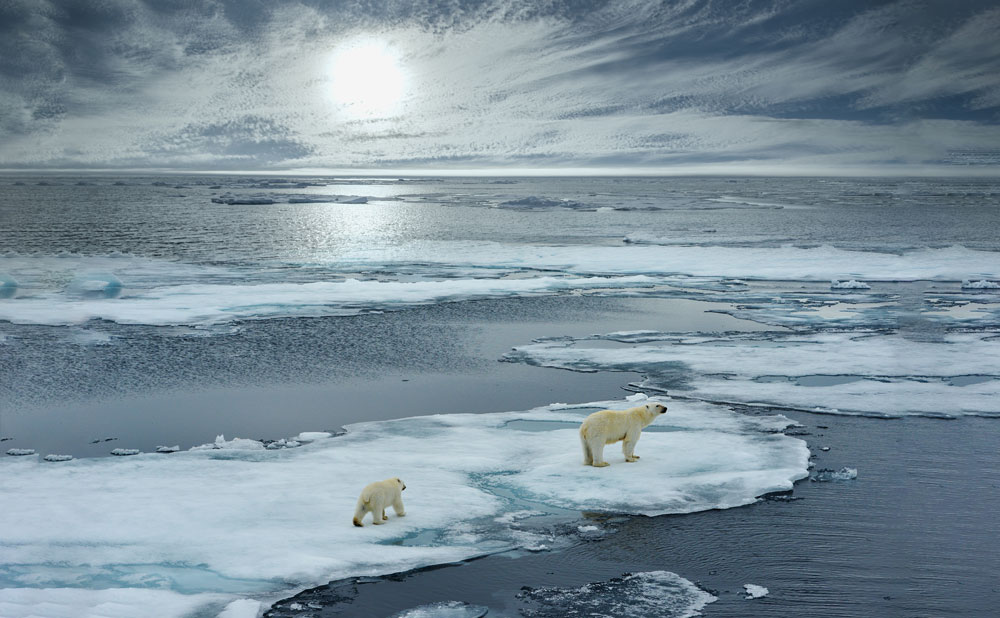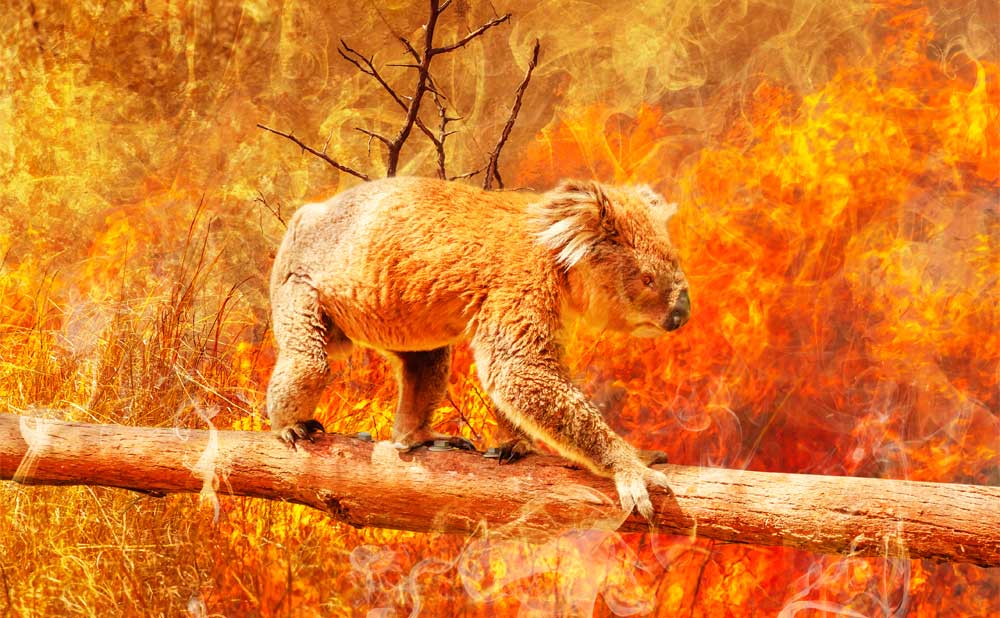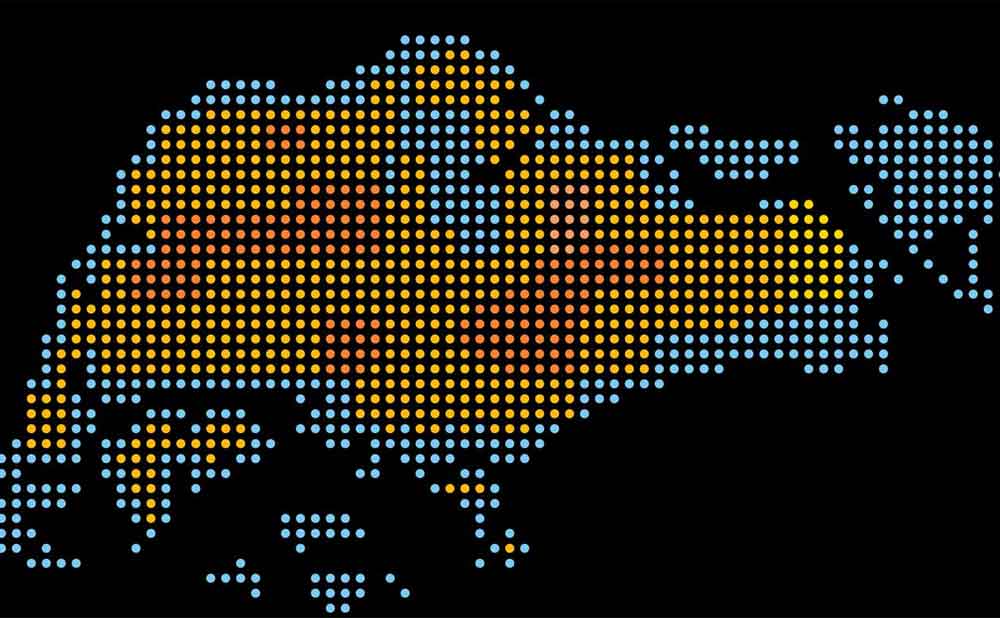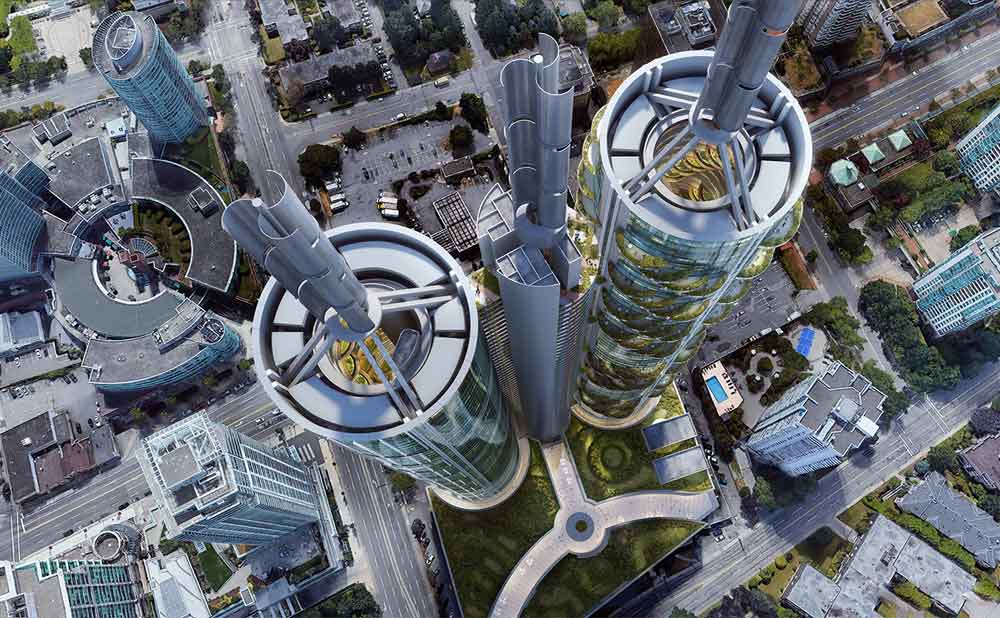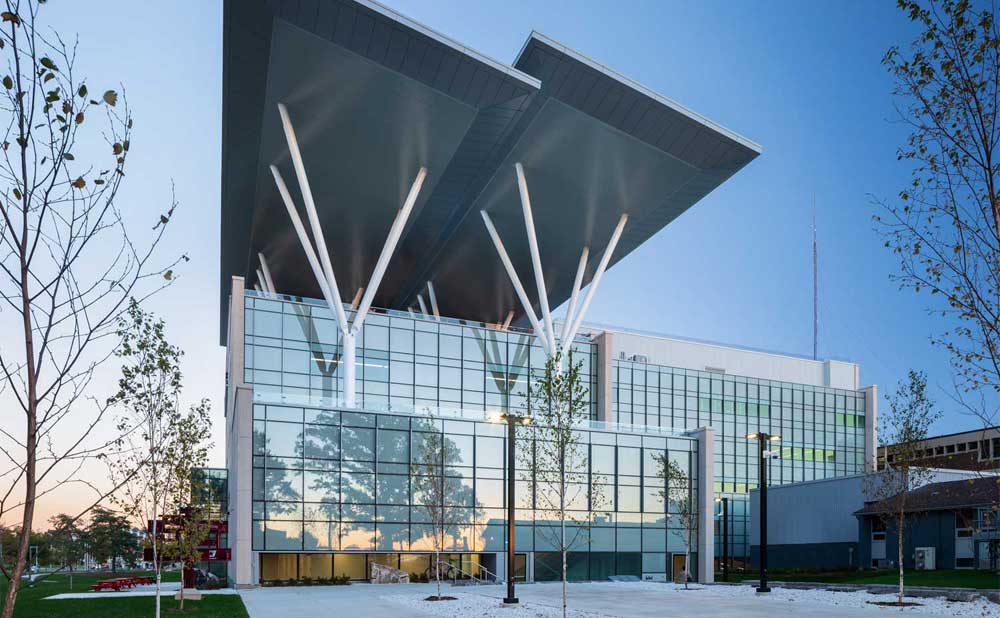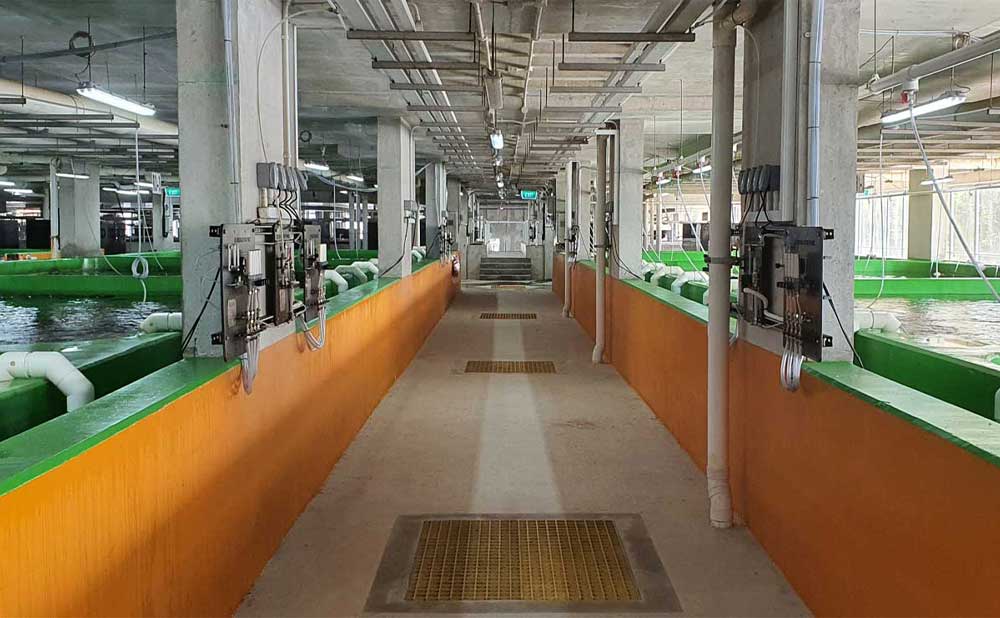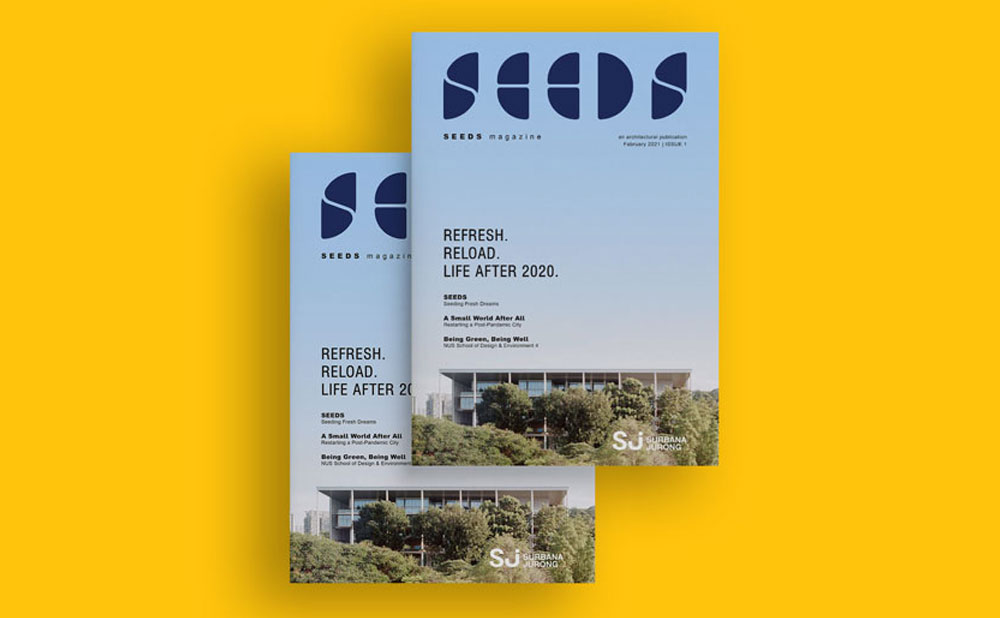Facing Up to the Crisis of Our Time
CLIMATE CHANGE IS AN EXISTENTIAL THREAT FOR HUMANITY
THAT WE MUST ACT ON, WITH UNITY AND URGENcy
Oct, 2021
Scientists have predicted the possible extinction of polar
bears by end of the century
Abstract: In the 2020 documentary ‘A Life on Our Planet’, Sir David Attenborough begins his narrative in a derelict
building in Pripyat, Ukraine, a site abandoned after the Chernobyl accident more than 40 years ago. He likens the
nuclear disaster to the climate change crisis we are now facing – both are the result of human error. In the course
of human history, painful lessons abound for learning how to live in harmony with the world we have inherited.
Climate change is certainly one of them and, according to Sir Attenborough, potentially the last.
In our inaugural issue of SEEDS in February, we focused on the Covid-19 crisis and shared our views and works that
relate to the discussion. Eight months on, the world continues on this roller-coaster ride. Some nations are still
enforcing strict restrictions while others are easing curbs. As vaccination rates rise and infection rates fall in some
regions, municipalities have attempted to relax safety measures, only to suffer setbacks which undid all the good
work. A ‘new normal’ remains elusive and is far from taking on any concrete shape or form. No one dares claim a
complete understanding yet of a shape-shifting enemy.
When the pandemic first started and lockdowns were imposed in many nations, a surreal phenomenon occurred – nature returned like a long-lost friend. Wildlife flourished, global temperatures cooled and CO2 emissions lowered. The empty streets and cities echoed apocalyptic scenes in some sci-fi flicks, where human beings are wiped out save for a few protagonists and resilient animal species. But optimism that the pandemic would serve as a wake-up call proved short-lived, as people quickly reverted to their pre-Covid behaviours. Emissions returned, temperatures rose again and wildlife retreated. If we were to draw an analogy between climate change and medicine, Covid-19 would be an acute illness and climate change a chronic health issue. Both are life-threatening but the rate of deterioration differs.
When the pandemic first started and lockdowns were imposed in many nations, a surreal phenomenon occurred – nature returned like a long-lost friend. Wildlife flourished, global temperatures cooled and CO2 emissions lowered. The empty streets and cities echoed apocalyptic scenes in some sci-fi flicks, where human beings are wiped out save for a few protagonists and resilient animal species. But optimism that the pandemic would serve as a wake-up call proved short-lived, as people quickly reverted to their pre-Covid behaviours. Emissions returned, temperatures rose again and wildlife retreated. If we were to draw an analogy between climate change and medicine, Covid-19 would be an acute illness and climate change a chronic health issue. Both are life-threatening but the rate of deterioration differs.
If we were to draw an analogy between climate change and medicine, Covid-19 would be an acute illness and climate change a chronic health issue.
Due to the clear and present danger of the coronavirus, the entire world sprang into action and stretched their capabilities to cope and survive. Every single country fought to save as many lives as they could, an effort that pushed some nations to the brink of collapse. Climate change, on the other hand, is like hypertension or diabetes, which are relatively tolerable conditions even when neglected for extended periods. That is, until the system hits the point of no return.
The Covid drama that played out over the last 18 months offers many lessons, and we should evaluate if any of them is applicable to our efforts in dealing with climate change. In the research paper ‘Analogical Problem Solving’ (Gick and Holyoak, 1980), out-of-field strategies are used to tackle sticky problems which have no answers from known solutions within the industry. Perhaps it is also worth drawing a parallel between the two here.
The Covid drama that played out over the last 18 months offers many lessons, and we should evaluate if any of them is applicable to our efforts in dealing with climate change. In the research paper ‘Analogical Problem Solving’ (Gick and Holyoak, 1980), out-of-field strategies are used to tackle sticky problems which have no answers from known solutions within the industry. Perhaps it is also worth drawing a parallel between the two here.
Knowing the Enemy
Scientists and doctors raced against time to research the coronavirus, draw up safety measures and develop
vaccines in double-quick time. The immediate impact of the deadly virus made the need to understand it imperative,
showing that nothing beats first-hand experience when it comes to learning. The effects of climate change is more
discriminatory as it most severely impacts the poorest communities. The Global Climate Risk Index 2021 states that
for the period from 2000 to 2019 Puerto Rico, Myanmar and Haiti ranked highest in terms of impact from
extreme-weather events. Poor countries are hit the hardest as they have a lower coping capacity and need more time
to rebuild and recover.
Ironically, affluent nations, which experience less impact arising from climate change due to more immediate access to shelter, and other resources, may respond only when it is too late, like the proverbial ‘frog in boiling water’. A relentless and effective dialogue is critical to keep the momentum going and trigger action. For the Covid crisis, it is tough enough, as it is, to challenge the inconsistent views about the severity of the situation we are in. In the fight against climate change, we must spare no effort to communicate and educate.
Ironically, affluent nations, which experience less impact arising from climate change due to more immediate access to shelter, and other resources, may respond only when it is too late, like the proverbial ‘frog in boiling water’. A relentless and effective dialogue is critical to keep the momentum going and trigger action. For the Covid crisis, it is tough enough, as it is, to challenge the inconsistent views about the severity of the situation we are in. In the fight against climate change, we must spare no effort to communicate and educate.
Flexibility in
Fluidity
Despite the best efforts to grapple with the enemy, the
fluidity of knowledge and strategies weakens the attempts
to pin it down. Incomplete views of the virulence of
Covid-19, the need for economic continuity and
ever-changing global scenarios form a highly dynamic
environment in which we have to constantly adapt to new
controls, standards and routines.
Like the pandemic, climate change is also a constantly evolving beast. Different schools of thought have resulted in conflicting views of the crisis, and there is no unified way of understanding the plight we are in.
Like the pandemic, climate change is also a constantly evolving beast. Different schools of thought have resulted in conflicting views of the crisis, and there is no unified way of understanding the plight we are in.
Our approach can no longer be based on a single truth and solution, but more of a cocktail of strategies and tactics. This entails constantly looking for new planning and design approaches, while at the same time being prepared to abort solutions we have grown comfortable with.
A United Effort
Climate change is an existential issue that threatens the future of mankind, and government organisations must get
involved. As healthcare institutions put together teams and resources to fight the virus in unprecedented ways,
non-healthcare groups have also been roped in. For example, construction companies and the military are deployed
to build quarantine facilities, while manufacturers are activated to ramp up personal protective gear production.
One key aspect of sustainability efforts to mitigate the effects of climate change is the continuity of social and community support. To achieve a long-lasting behavioural change, people need to be socially invested, or the efforts will lose steam.
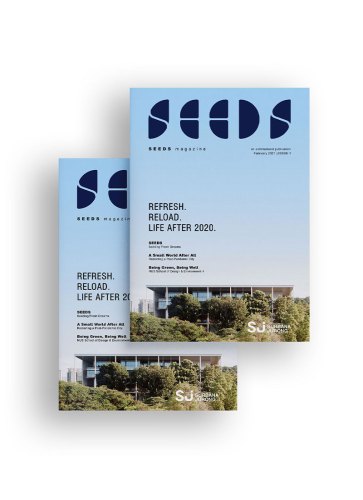
Public and private sectors need to proactively collaborate, using
their complementary abilities to realise sustainability goals. As
government agencies set sustainable policies to guide
industries, practitioners must demonstrate how to execute
ideas sustainably.
Here in SEEDS Journal, our architects and designers have found the United Nations Sustainable Development Goals (UN SDGs) to be a relevant platform for us to illustrate SJ’s efforts in shaping a sustainable world. The SDGs are lofty and down-to-earth at the same time, just as the goals of each of the projects are. With the SDGs, we are also able to draw co-relationships between these featured works, which guide us in developing a multi-faceted approach to the chronic crisis of climate change.
‘A Life on Our Planet’ ends with Sir Attenborough walking out of the abandoned building in Pripyat. Ironically, it now looks like a Garden of Eden, where lush greenery and wildlife thrive. The sobering message is that it is the human species, not nature, that is edging dangerously close to the point of no return. But we still have a chance – if we act right now.
Here in SEEDS Journal, our architects and designers have found the United Nations Sustainable Development Goals (UN SDGs) to be a relevant platform for us to illustrate SJ’s efforts in shaping a sustainable world. The SDGs are lofty and down-to-earth at the same time, just as the goals of each of the projects are. With the SDGs, we are also able to draw co-relationships between these featured works, which guide us in developing a multi-faceted approach to the chronic crisis of climate change.
‘A Life on Our Planet’ ends with Sir Attenborough walking out of the abandoned building in Pripyat. Ironically, it now looks like a Garden of Eden, where lush greenery and wildlife thrive. The sobering message is that it is the human species, not nature, that is edging dangerously close to the point of no return. But we still have a chance – if we act right now.
The SEEDS Journal, started by the architectural teams across the Surbana Jurong Group in Feb 2021, is a platform
for sharing their perspectives on all things architectural. SEEDS epitomises the desire of the Surbana Jurong Group
to Enrich, Engage, Discover and Share ideas among the Group’s architects in 40 countries, covering North Asia, ASEAN,
Middle East, Australia and New Zealand, the Pacific region, the United States and Canada.
Articles at a glance




